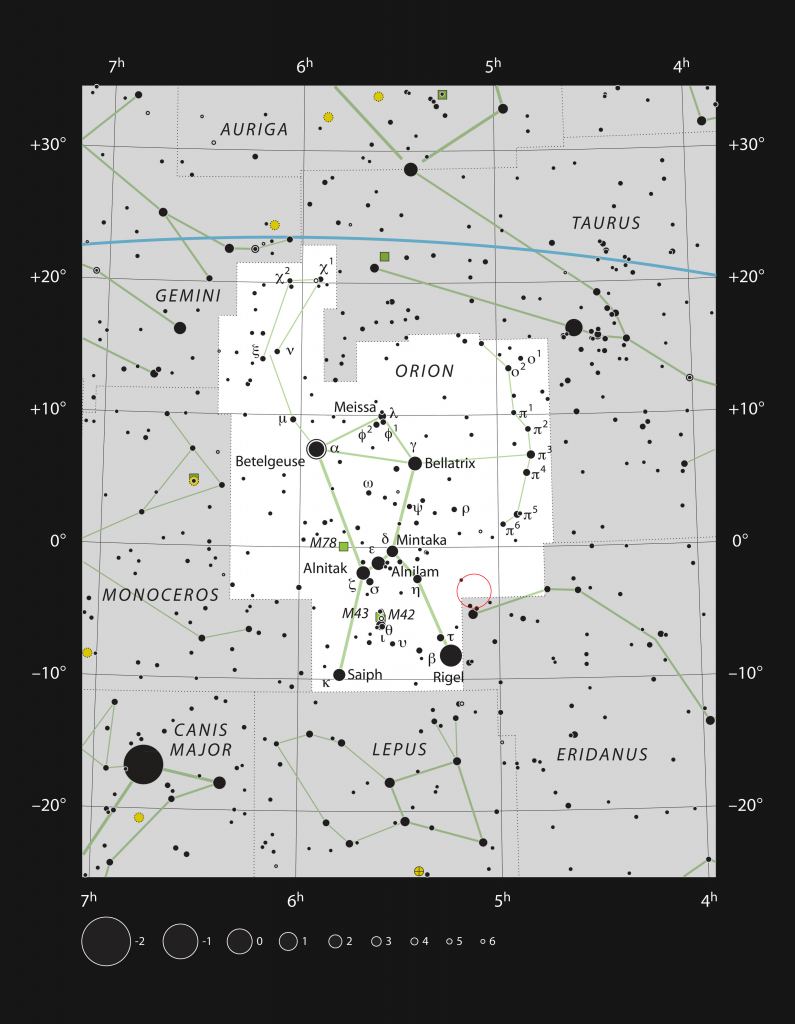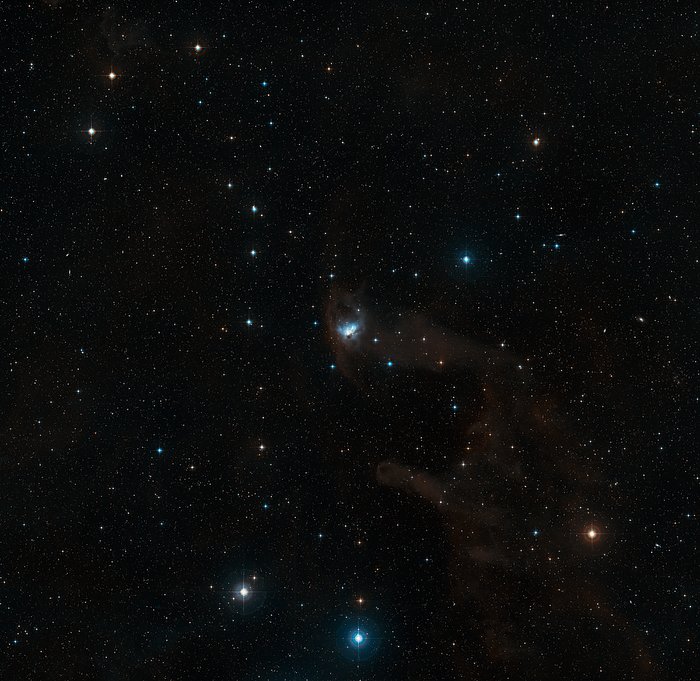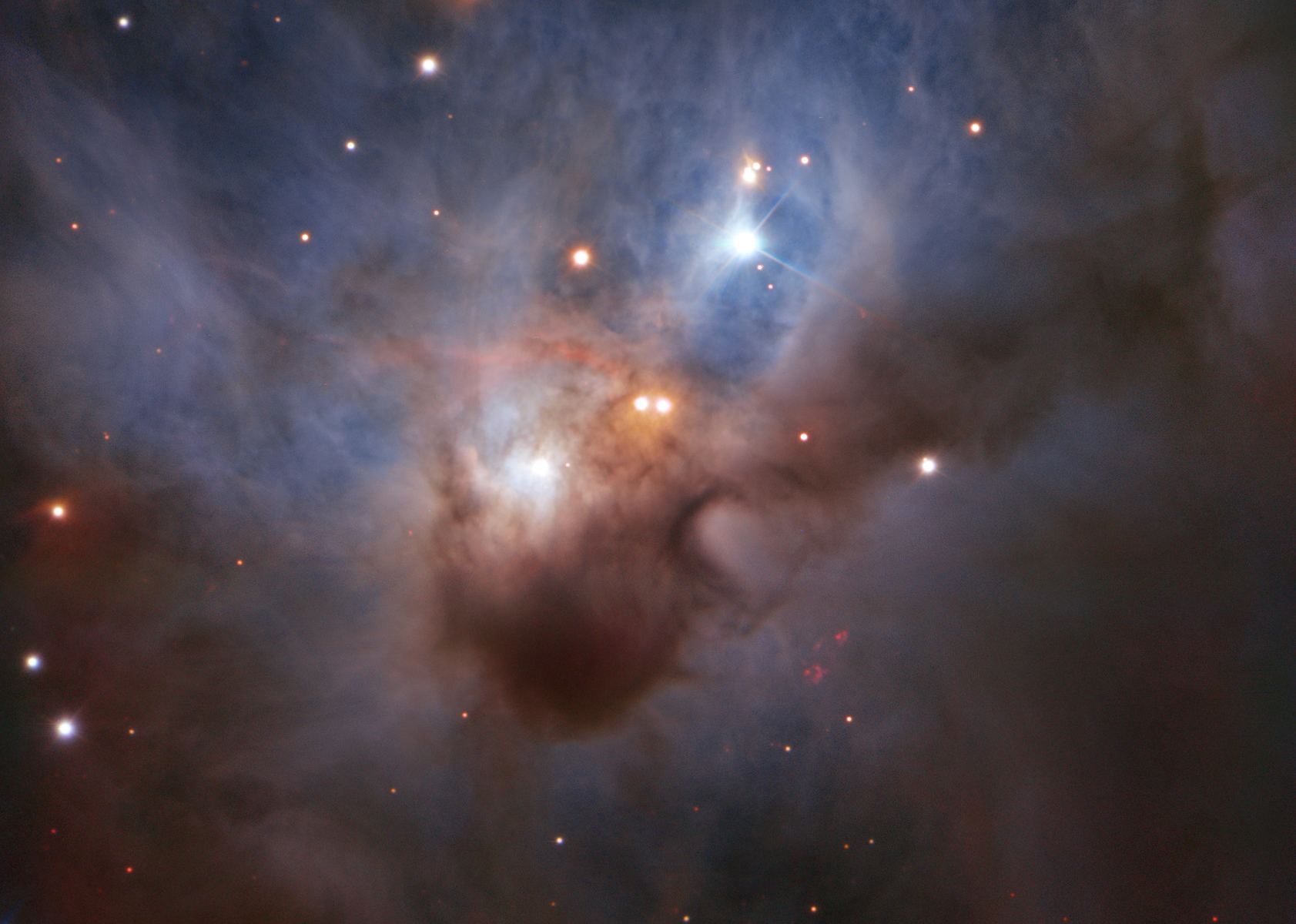2,000 light years away, in the Orion constellation, lurks an eerie looking creature, made of glowing gas lit up by young stars: the Cosmic Bat.
Its real name is NGC 1788. It’s a reflection nebula, meaning the light of nearby stars is strong enough to light it up, but not strong enough to ionize the gas, like in an emission nebula. Even though the stars are young and bright, the Cosmic Bat is still hidden. It took the powerful Very Large Telescope (VLT) to capture this image.
This ethereal, animalistic nebula is well-hidden deep in Orion’s dust. Though it’s been known since the late 1800’s, it’s never been imaged this well before.

ESO, IAU and Sky & Telescope
The Bat is actually very small, and very dim. It’s only now that we have such powerful telescopes that the Bat can be enjoyed in all its visual glory. In fact, this new image from the VLT is the finest image we’ve ever seen of NGC 1788.
In some ways, the Cosmic Bat is an oddball. It’s pretty isolated from any other objects. Still, astronomers think that very powerful winds from the closest stars sculpted the Bat out of the clouds of dust. Streams of scorching plasma from the upper atmosphere of stars shaped the nebula into the strange form we see today.

ESO/Digitized Sky Survey 2. Acknowledgement: Davide de Martin
We have the FORS2 (FOcal Reducer and low dispersion Spectrograph 2) instrument on the VLT to thank for this image. Instrument scientists with the ESO call the FORS2 the Swiss army knife of telescope instruments. Not only can the instrument take very high-sensitivity images of objects in the sky, but it can capture large areas of the sky at once. It can also capture the spectra of many objects at once. Way to go, Europe.
The image is part of the ESO’s Cosmic Gems program.
The Cosmic Gems program is pretty cool. Telescopes like the VLT aren’t really made to capture nice images for us. They’re scientific instruments first and foremost, and much of what they acquire is actually data, rather than conventional images.
But there’s a massive archive of data from the VLT, and sometimes the public outreach people at the European Southern Observatory (ESO) comb through that data. They try to find images that aren’t just data, but are striking images of some of the most visually stunning objects around, like the Cosmic Bat.
You can find them in the Cosmic Gems Images Gallery.
Shout Out!
Bats and Space go together like ice cream and caviar. Don’t believe me?
Check out Ian O’Neill at Astroengine.com.

